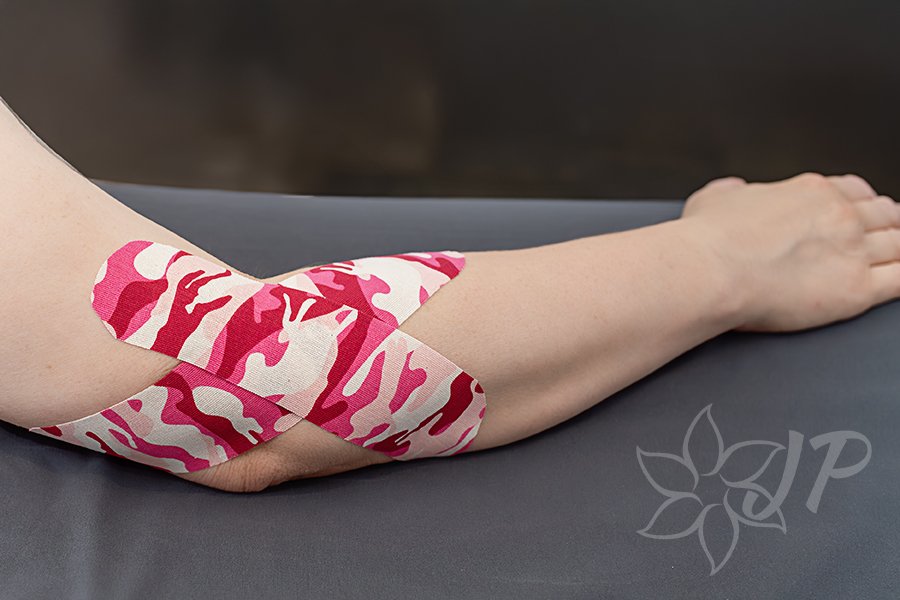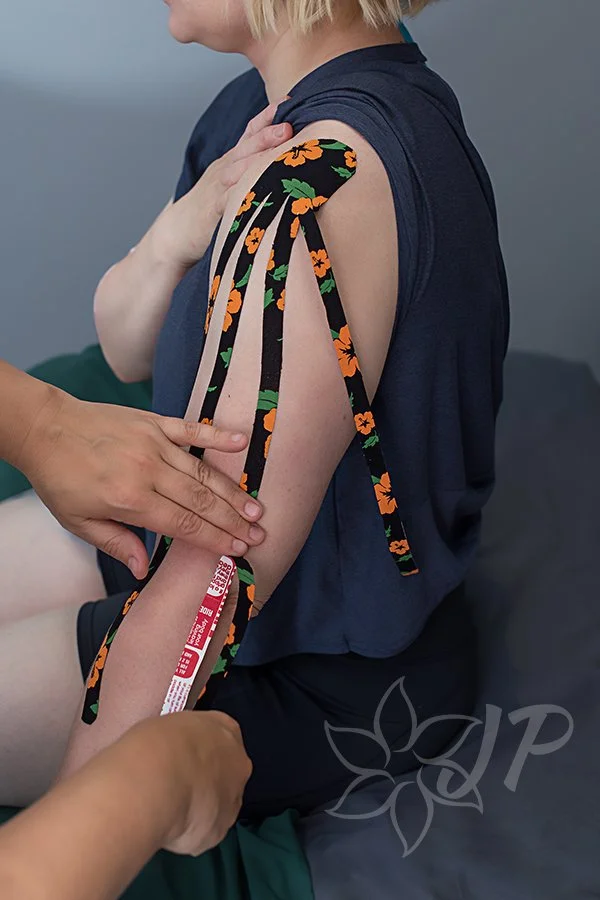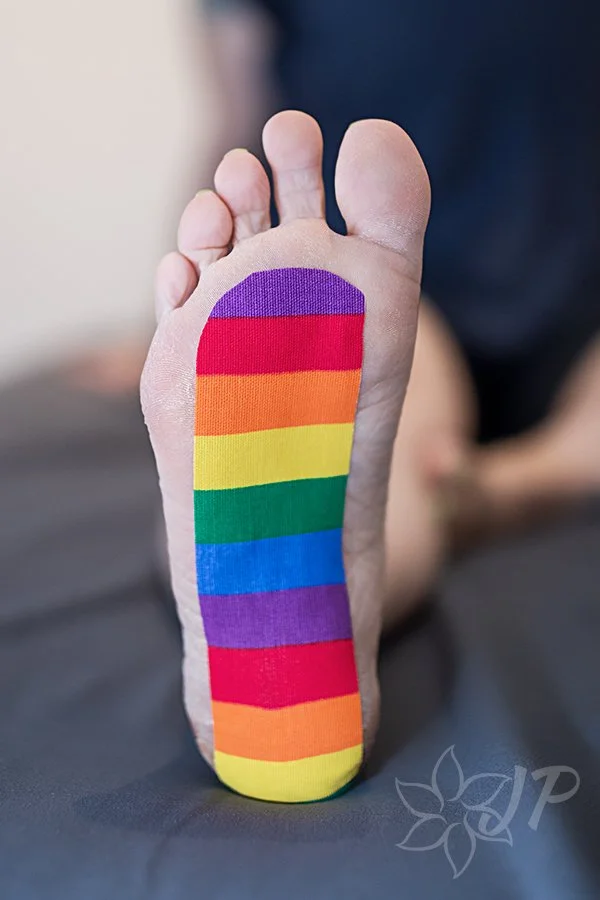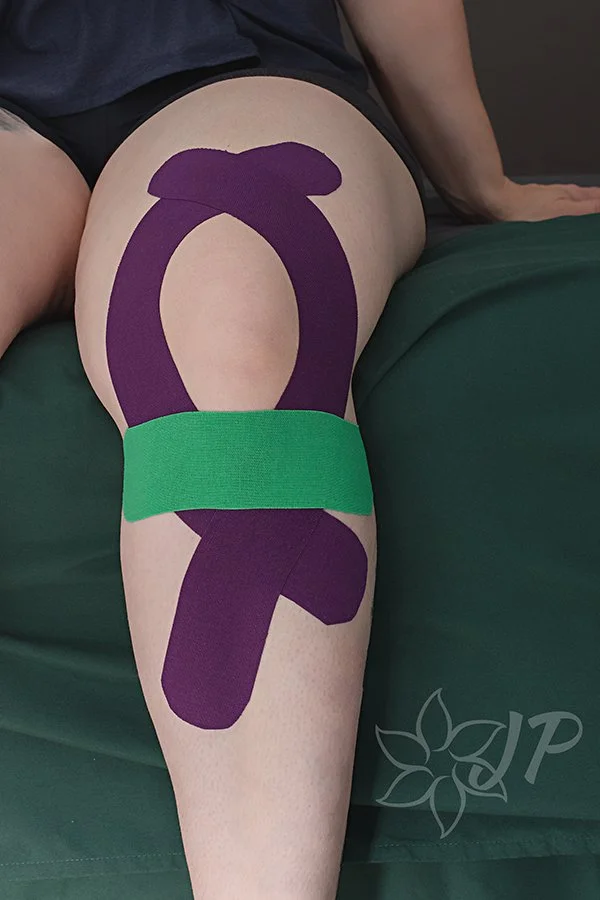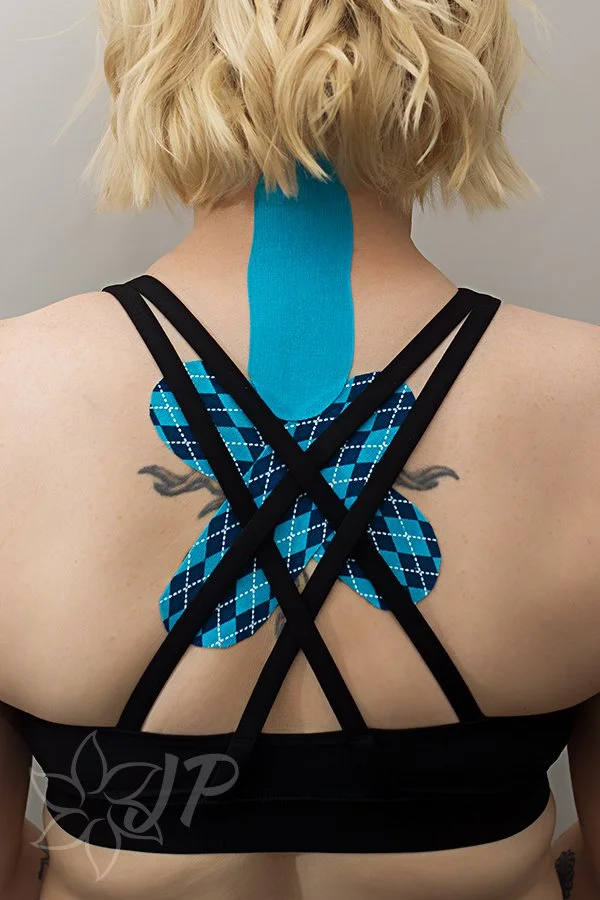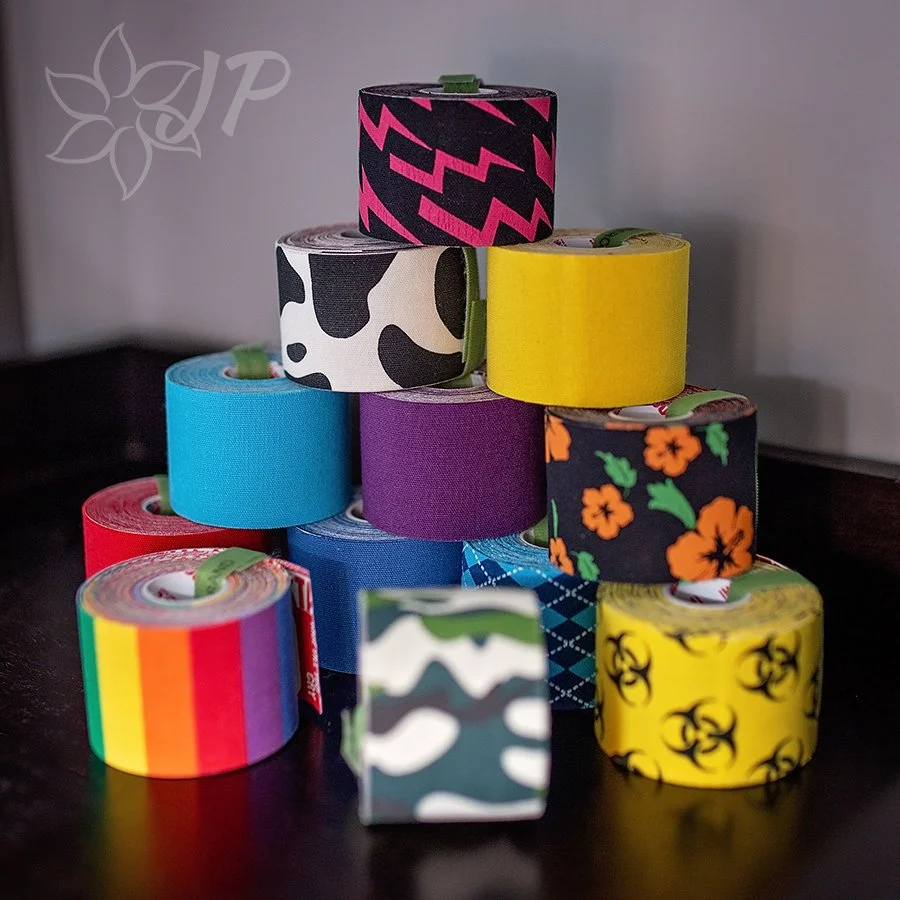Kinesiology Taping has gained popularity over the last years. Often seen on high level athletes, kinesiology tape is a flexible, breathable tape that can be work for several days to support and encourage optimal movement for a specific area. It can be used for areas of past injury, discomfort, postural correction, or lymphatic assistance.
While once believed to be physically supporting the joint, muscle, tendon, or ligament, we now know this to be incorrect. Instead, applying tape to the skin works with the body-brain connections and lymph system, which have been shown to help with compromised areas. Taping works specifically with three main components:
1. Propioception.
When there is injury or issue, normal motion often is compromised. Discomfort or pain, over time, can create a dulling of the local nerves, leaving a distorted body map in the brain. Tape applied to the skin level activate the prioroceptors in the area, which then can help to reconnect the brain to where that body part is in space.
2. Nociceptors and Mechanoreceptors
Two important nerve receptors in our skin, the nocicpators sense pain, while mechanoreceptors sense pressure and touch. The gentle application of tape helps to stimulate the touch receptors, which send signals faster than the pain receptors, and can decrease how much pain is perceived by the brain. This in turn can allow the body to feel less threatened, which then minimizes the fight or flight response. All of which helps to allow the area to return to typical motion, with less need for adaptations or modifications.
3. Lymphatics
The lymph system is important for removing fluid build ups from tissues, especially in healing areas where inflammation or swelling was present. The lymph system does not have a pump to keep things flowing, but instead relies on body movement and muscle contraction. When tape is applied, it lifts the skin slightly, allowing the lymph system to have more space. This changes the high-low pressure system, allowing excess fluid to draw out of the area more easily.
Kinesiology Tape is made of cotton and nylon, with adhesives that are zinc and latex free. It is less likely to cause a reaction or irritation because of these factors. It is soft and flexible, somewhat water resistant, and is available in a variety of colours and prints. It can be worn 3-5 days after application. It comes in a variety of colours and prints, just for fun!
Tape can be applied to most places on the body. Softer skin areas, such a the back of the knee and crook of the elbow, are avoided as much as possible. Oily skin, heavy sweating, swimming, and increased body hair can affect the adhesive, and may cause the tape to loosen sooner. Alcohol can be used to wipe the areas clean prior to application, if needed. Longer body hair may need to be reduced (shaving off the hair entirely may cause skin irritation, so instead using electric trimmers may be a better alternative).
When removing, it is advisable to pull or roll the tape gently and slowly to avoid damaging the skin.
*Taping can be a stand-alone treatment of 15 minutes, or booked in conjunction with a massage treatment. When booked with a massage, 15 minutes of the time will be allocated to taping, with the rest for massage therapy. Taping can be before or after the massage, depening on treatment areas requested.
Offered by Tegan.

